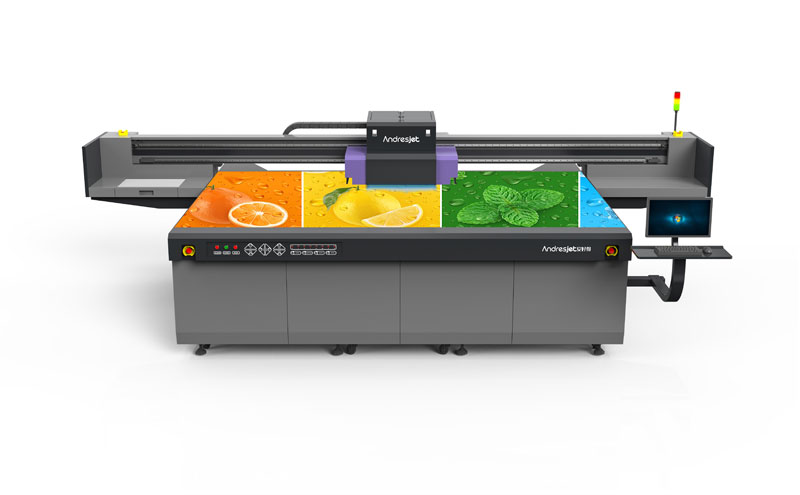UV Flatbed Printer: The Advantages of a Fully Automated Workflow
UV Flatbed Printer: The Advantages of a Fully Automated Workflow
In the realm of digital printing, advancements have been relentless, pushing the boundaries of what is achievable in terms of speed, quality, and versatility. One such remarkable innovation is the UV flatbed printer, a technology that has revolutionized the way we approach large-format printing. By incorporating a fully automated workflow, UV flatbed printers offer a multitude of advantages that transcend traditional printing methods, making them a staple in various industries ranging from advertising to manufacturing. This article delves into the intricacies of UV flatbed printers and explores the numerous benefits of their fully automated workflow.

Understanding UV Flatbed Printers
UV flatbed printers are a type of digital printing machinery designed to print directly onto flat surfaces or substrates. They utilize UV-curable inks that instantly dry when exposed to ultraviolet light, enabling immediate handling and finishing without the need for lengthy drying times. This technology allows for the printing of high-resolution images with vibrant colors and exceptional detail on a wide array of materials, including glass, metal, plastic, wood, and even certain textiles.
The core advantage of UV flatbed printers lies in their ability to accommodate large and irregularly shaped objects, thanks to their flatbed design. This versatility, combined with the precision of digital printing, makes them an invaluable tool for creating customized, high-quality prints.
The Shift to Fully Automated Workflows
Traditionally, printing processes involved manual steps that were not only time-consuming but also prone to human error. The advent of fully automated workflows in UV flatbed printers has transformed this landscape, streamlining production and enhancing efficiency. Automation refers to the integration of machinery, computers, and software to perform tasks with minimal human intervention.
In the context of UV flatbed printers, a fully automated workflow encompasses several key features:
Automated Material Handling: The printer is equipped with mechanisms that can load, position, and unload substrates, reducing the need for manual handling.
Integrated Pre-Press Functions: Tasks such as file preparation, color management, and image adjustment are automated, ensuring consistent print quality.
Real-Time Monitoring and Adjustment: Advanced sensors and software monitor print quality during the process, automatically adjusting settings to maintain optimal output.
Inline Finishing Options: Some UV flatbed printers offer inline cutting, laminating, or varnishing, further reducing manual post-print processes.
Advantages of a Fully Automated Workflow
Increased Efficiency and Productivity
Automation significantly reduces the time required for setting up and executing print jobs. With minimal manual intervention, printers can operate continuously, maximizing uptime and throughput. This increased efficiency translates to higher productivity, allowing businesses to meet tight deadlines and fulfill larger orders.
Enhanced Print Quality and Consistency
Automated workflows ensure that every print job adheres to predefined quality standards. By eliminating human error and variability, UV flatbed printers produce consistent, high-quality prints across large volumes. Real-time monitoring and adjustment capabilities further guarantee that prints meet or exceed customer expectations.
Cost Savings
While the initial investment in a fully automated UV flatbed printer may be higher, the long-term cost savings are substantial. Automation reduces labor costs, as fewer personnel are required to operate the machine. Additionally, the efficiency gains lead to reduced material waste, ink consumption, and energy usage, all contributing to lower operational expenses.
Versatility and Flexibility
The ability to print on a wide range of materials and sizes is a hallmark of UV flatbed printers. Fully automated workflows enhance this versatility by allowing for seamless transitions between different jobs and substrates. This flexibility enables businesses to cater to a broader clientele and explore new market opportunities.
Faster Time to Market
In industries where time-to-market is crucial, such as advertising and product design, UV flatbed printers with fully automated workflows offer a competitive edge. The ability to quickly produce high-quality prints enables businesses to respond rapidly to market demands and capitalize on emerging trends.
Environmentally Friendly
UV-curable inks are more environmentally friendly than traditional solvent-based inks. They emit low volatile organic compounds (VOCs) and can be cured without generating heat, reducing energy consumption. Furthermore, automation minimizes waste and optimizes ink usage, contributing to a greener printing process overall.
Scalability and Future Compatibility
As businesses grow, so do their printing needs. Fully automated UV flatbed printers are designed to be scalable, allowing for easy integration of additional features or upgrades as required. This adaptability ensures that the printer remains a valuable asset even as technology continues to evolve.
Conclusion
The UV flatbed printer, coupled with a fully automated workflow, represents a significant leap forward in digital printing technology. Its advantages—increased efficiency, enhanced print quality, cost savings, versatility, faster time to market, environmental friendliness, and scalability—make it an indispensable tool for businesses seeking to stay competitive in today’s fast-paced market. As technology continues to advance, UV flatbed printers with fully automated workflows will only become more sophisticated, further pushing the boundaries of what is achievable in digital printing. For those in the printing and manufacturing sectors, embracing this technology is not just a matter of staying current; it’s a strategic decision that can unlock new levels of productivity and profitability.
